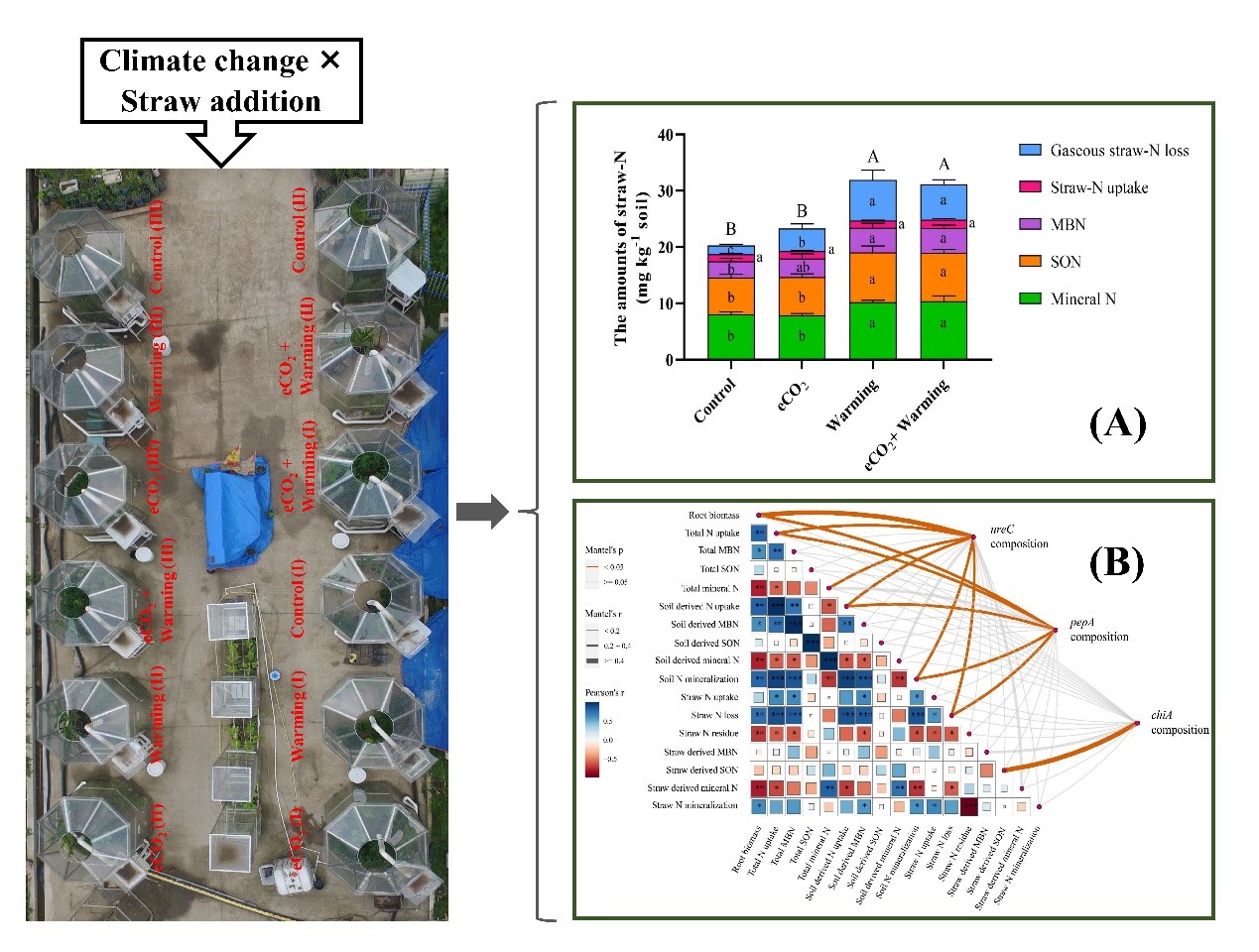The amendment of rice straw to the soil is normally recommended as straw is an important source of soil organic matter and provides nutrients to subsequent crops. Straw-nitrogen (N) together with soil-N are mainly in organic N form, which needs to be mineralized by microbes to be available to crops. However, it is largely unknown on how climate change impacts the straw-N mineralization and relevant microbial attributes.
Recently, researchers at the Northeast Institute of Geography and Agroecology, Key Laboratory of Mollisols Agroecology, Chinese Academy of Sciences (CAS) used 15N-labeled straw to quantify straw-N mineralization, and deployed 16S gene sequencing to investigate rice rhizosphere microbial community composition associated with straw-N mineralization when rice plants were grown under elevated CO2 (700 ppm) and warming (2℃ above ambient).
Related findings were published in Geoderma on 1 March.
Co-elevated CO2 and temperature had no significant effect on the straw-N-use efficiency, but significantly enhanced the straw-N mineralization with greater increase in the rhizosphere than bulk soil. Climate change resulted in more straw-N transformed into microbial biomass, soluble organic, and mineral N pools (Fig. 1A). Under the straw addition, co-elevated CO2 and temperature significantly increased the abundance of leucine aminopeptidase gene (pepA), and significantly changed the composition of microbial communities relative to urease (ureC) and pepA, contributing to straw-N mineralization (Fig. 1B).
This study suggested that climate change significantly accelerated the straw-N mineralization by changing the microbial community related to the functional genes of nitrogen mineralization in the rhizosphere of rice. Those results favor the improvement of crop straw management under climate change.

Fig. 1 Effects of co-elevated CO2 and temperature on the fate of straw-nitrogen (A); Correlations between environmental factors and microbial communities related nitrogen mineralization functional genes in the rhizosphere of rice with straw application (B)
Contact:
Jin Jian
Northeast Institute of Geography and Agroecology, Chinese Academy of Sciences
E-mail: jinjian29@hotmail.com
Keywords
Keywords
15N labeled straw; N-mineralization gene; Microbial community composition
Leucine aminopeptidase; Climate change
Reference:
https://doi.org/10.1016/j.geoderma.2024.116834